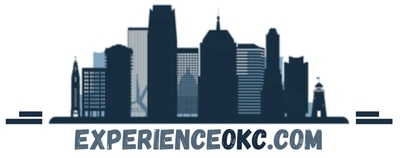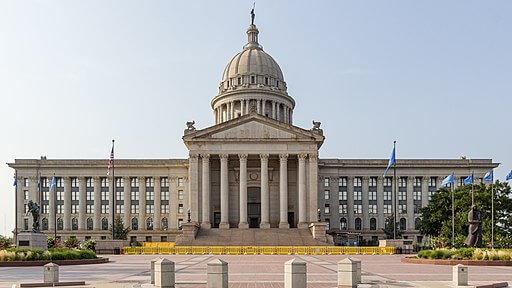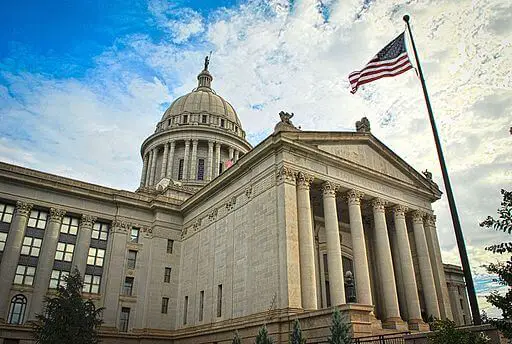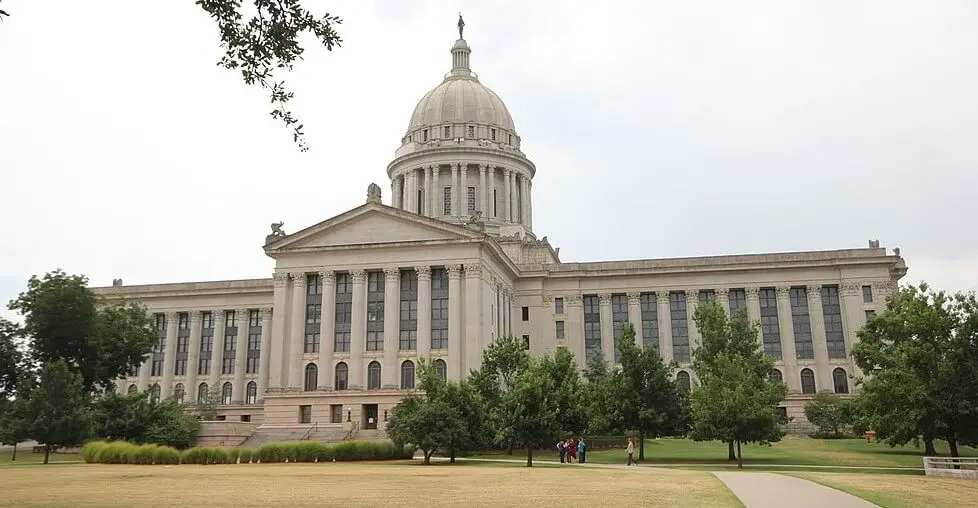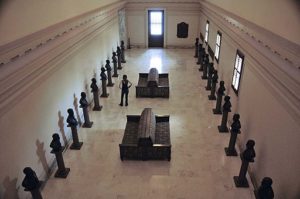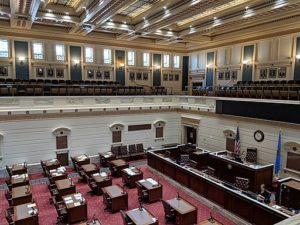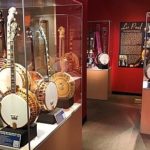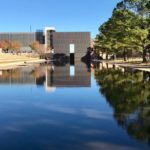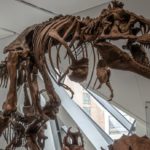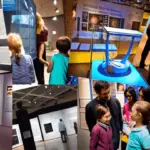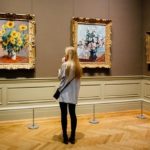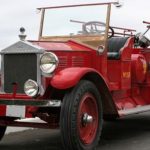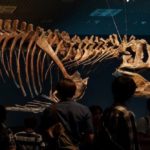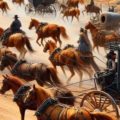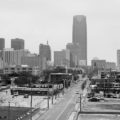About The Oklahoma State Capitol & Museum
The Oklahoma State Capitol is a must-see destination for anyone interested in the history, culture, and government of Oklahoma. The Capitol building itself is an architectural marvel, with its majestic dome, grand hallways, and intricate decorations. But what sets the Capitol apart is the incredible museum located inside.
The Oklahoma State Capitol Museum offers visitors a comprehensive look at the state’s past, present, and future through a wide range of exhibits and displays. From the struggles of the Native American tribes who first inhabited the land, to the oil boom that transformed Oklahoma into an economic powerhouse, to the state’s ongoing efforts to promote education and innovation, the museum covers it all.
With knowledgeable staff, engaging programs, and interactive exhibits, the Oklahoma State Capitol Museum is an educational and inspiring destination for visitors of all ages and backgrounds.
The Building and its History
The Oklahoma State Capitol serves as the administrative center of the state of Oklahoma. It is the home of the Oklahoma Legislature, as well as the Executive Branch and the Judicial Branch of the state government.
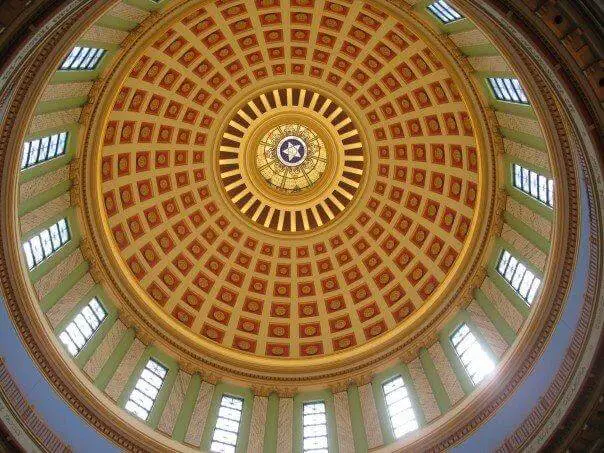 It is famous for both the size of its dome and the fact that it is the only state Capitol building in the United States to include both an inner and an outer dome. Bruce Goff, an American architect, is credited for the building’s design.
It is famous for both the size of its dome and the fact that it is the only state Capitol building in the United States to include both an inner and an outer dome. Bruce Goff, an American architect, is credited for the building’s design.
There were three distinct phases involved in the construction of the Oklahoma State Capitol.
• The first stage, which was finished in 1914, comprised of a central dome along with two wings.
• In the second stage, which was finished in 1916, the north and south wings were added.
• The third and final stage, which was finished in 1917, included the addition of the east and west wings, as well as the dome.
The architectural style known as Beaux-Arts was used for the construction of the Capitol, which is made of limestone sourced from quarries in the surrounding area.
Important Collections
The Capitol Collection, the Statehood Collection, and the Oklahoma History Collection are the three most significant collections found inside.
Each collection has a richness of artifacts, records, and other materials that tell the narrative of Oklahoma’s history.
Let’s take a closer look…
The Capitol Collection
The Capitol Collection is the biggest of the three collections and has more than 5,000 artifacts that are connected to the Oklahoma State Capitol building.
The collection contains a variety of objects relating to the building of the Capitol, such as pictures, architectural designs, and blueprints.
In addition, there is a substantial amount of art in the collection. Some of the paintings, sculptures, and other forms of artwork that may be seen in the Capitol building are included.
The Statehood Collection
Almost two thousand artifacts and documents that pertain to the period before Oklahoma became a state are housed in the Statehood Collection. The collection contains a broad range of papers, some of which are relevant to the Oklahoma Territory, such as land grants and treaties.
Other materials in the collection are unrelated to the Oklahoma Territory. The collection also includes a significant number of pictures, maps, and other materials that illustrate daily life in the Oklahoma Territory during that period.
The Oklahoma History Collection
The Oklahoma History Collection is the smallest of the three collections, yet despite its size, it nevertheless includes a significant amount of material about the history of the state.
The collection contains materials that pertain to the Native American communities who formerly inhabited the state, as well as the Land Rush of 1889 and the Dust Bowl. The collection also includes several things that are connected to the oil sector in the state, such as drilling rigs, pipelines, and other pieces of machinery and apparatus.
Activities for Visitors:
Here are some sights and activities you may want to check out during your time at the museum:
Take a guided tour of the Capitol building: The museum provides guided tours of the Capitol building, which include visits to the governor’s office, the House and Senate chambers, as well as the dome.
Learn about Oklahoma’s history: The museum has exhibits that explore the state’s history from its Native American beginnings through its participation in the Civil War and the oil boom of the early 20th century.
See historical artifacts: Visitors will have the opportunity to see a variety of historical objects at the museum. These relics include rifles from the time of the American Civil War, Native American pottery and baskets, and oil industry equipment from the early 20th century.
Oklahoma Veterans Memorial: Located inside the museum, and honors those who have served their country in the armed forces in Oklahoma. The memorial comprises an exhibition of military uniforms, equipment, and medals.
Art collection: Visit the museum’s art collection, which includes paintings, sculptures, and murals that represent Oklahoma’s history and culture. The museum also showcases a collection of art that was created in Oklahoma.
Special events: Participate in one of the museum’s many special events: during the year, the museum puts on a variety of special events, such as concerts, seminars, and art exhibitions.
Visiting the Oklahoma State Capitol Museum provides guests with the opportunity to not only learn about the illustrious past and vibrant culture of the state of Oklahoma but also to see the breathtaking Capitol building itself!
Planning Your Visit:
About the Guided Tours
Guided tours of the Oklahoma State Capitol Building offer visitors an opportunity to learn about the state’s history, government, and architecture. Trained guides lead visitors through the building, highlighting the architectural features and artwork, and sharing interesting facts and stories about the state’s history and government. The tours last around 45 minutes to an hour and are suitable for all ages. Groups of more than 15 must submit a request at least 30 days in advance.
Guided tours are free and are available Monday through Friday from 9:00 a.m. to 3:00 PM every hour, on the hour.
Take a Self-Guided Tour
With no prior notice required, visitors can embark on self-guided tours at their own pace and immerse themselves in the rich history and architecture of the Oklahoma State Capitol. Access to the building’s south entrance is recommended on weekdays while visitors must enter through the west entrance on weekends and holidays. Tour maps can be downloaded online for added convenience.
Visitors can take a self-guided tour on weekdays from 8:00 a.m. to 5:00 p.m. and on weekends from 9:00 a.m. to 4:00 p.m.
Frequently Asked Questions:
Are tours of the Oklahoma State Capitol Building free?
Yes, tours of the Oklahoma State Capitol Building are free.
Can I take pictures during the tour of the Oklahoma State Capitol Building?
Yes, you can take pictures during the tour of the Oklahoma State Capitol Building, but there are some restrictions. Flash photography and tripods are not allowed in certain areas of the building.
How long is a tour of the Oklahoma State Capitol Building?
The length of the tour can vary depending on the size of the group and the areas visited, but typically tours last around 45 minutes to an hour.
Is there parking available for visitors to the Oklahoma State Capitol Building?
Yes, there is free parking available for visitors to the Oklahoma State Capitol Building. There are several parking lots and a parking garage available.
Is the Oklahoma State Capitol Building accessible for visitors with disabilities?
Yes, the Oklahoma State Capitol Building is accessible for visitors with disabilities. There are elevators, ramps, and accessible restrooms available.
How to Get to the Oklahoma State Capitol Building:
2300 N Lincoln Blvd, Oklahoma City, OK 73105
(405) 521-3356
Visit the Official Website
Concluding Thoughts:
The museum offers a wealth of knowledge about Oklahoma’s history, culture, and natural resources. Whether you join a guided tour or explore the building and museum on your own, you will discover interesting and educational exhibits and displays that are sure to leave a lasting impression.
So next time you’re wanting something fun and educational to do, be sure to check out this historic landmark that showcases the state’s government, art, and architecture.
